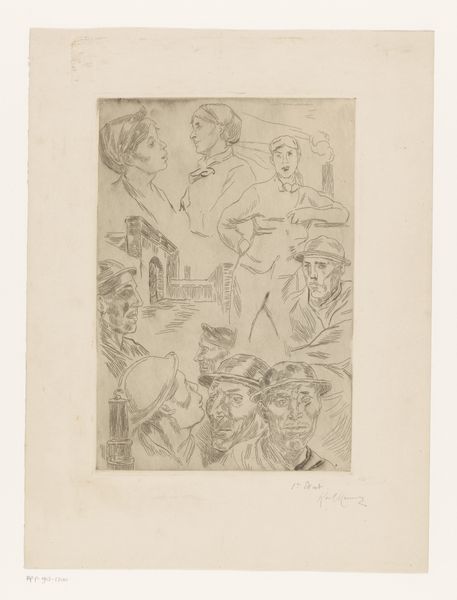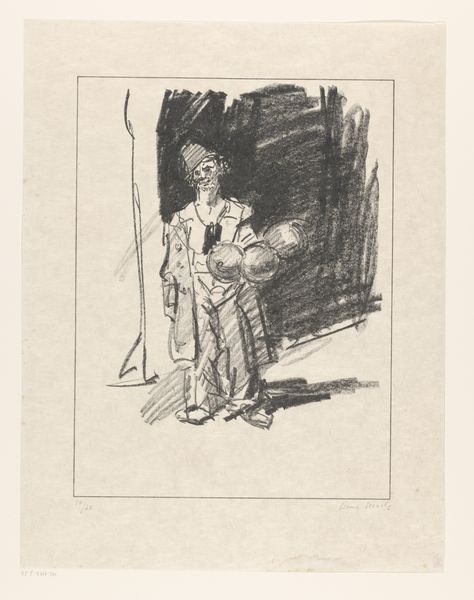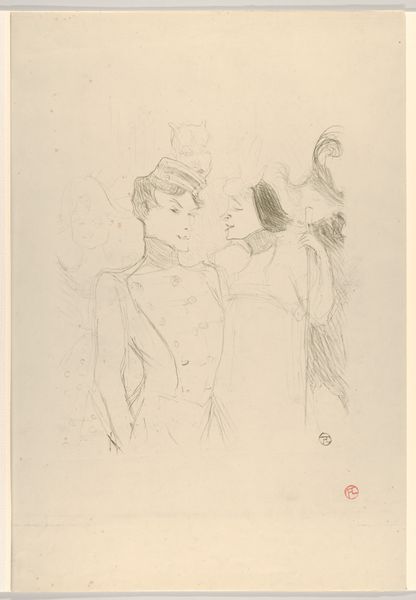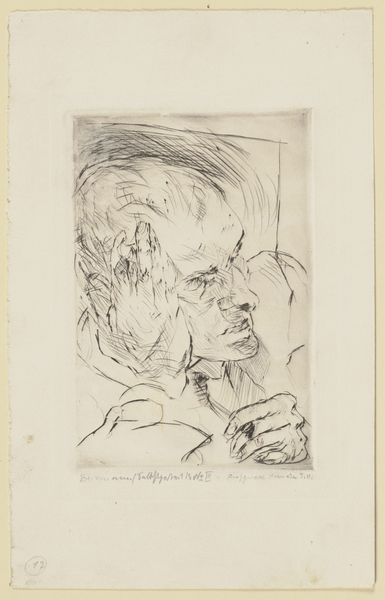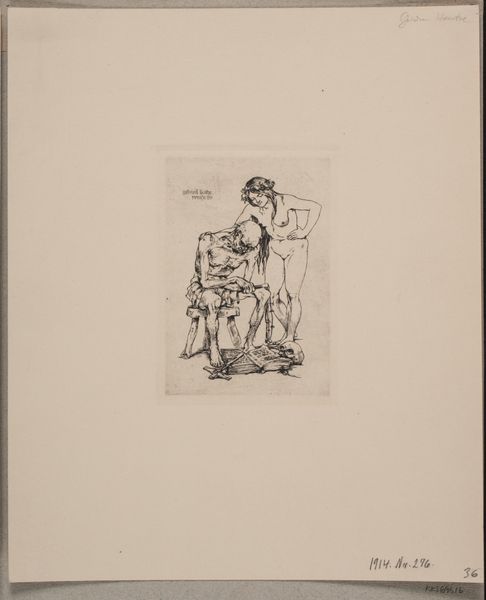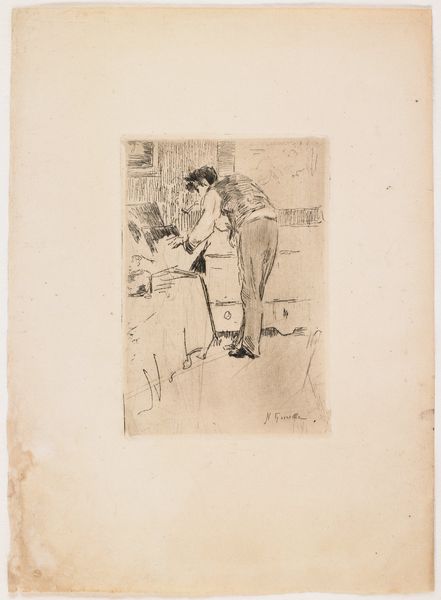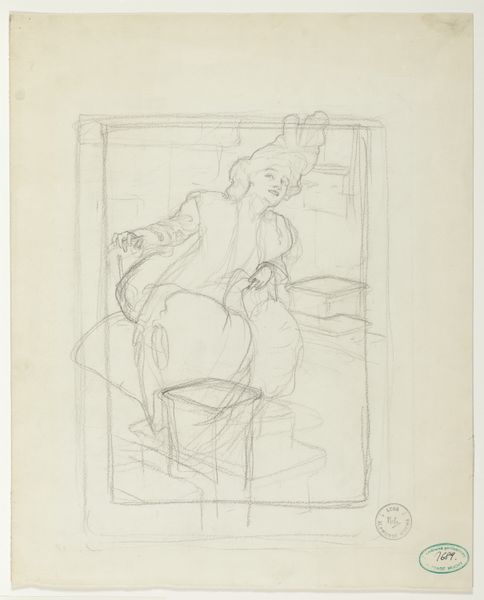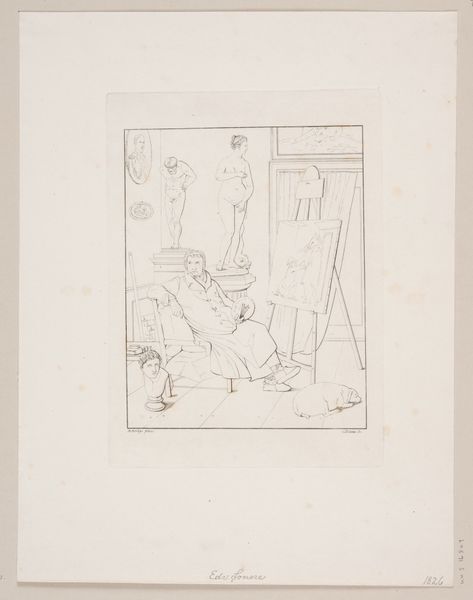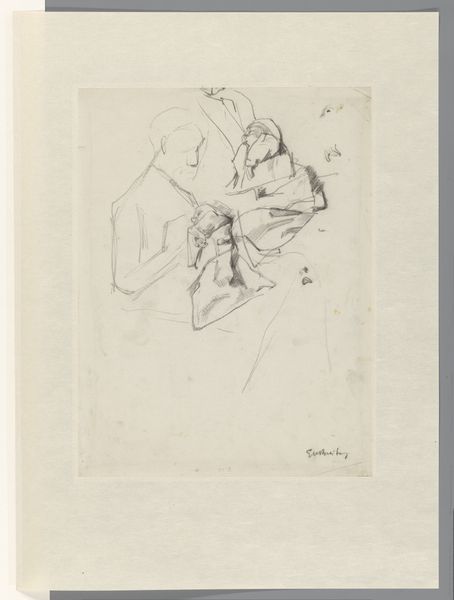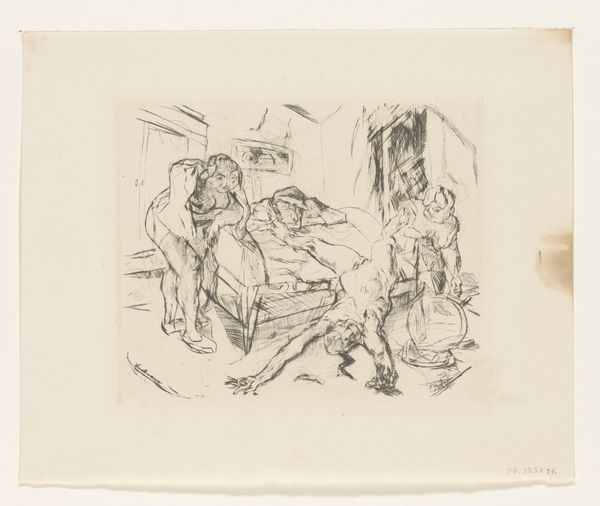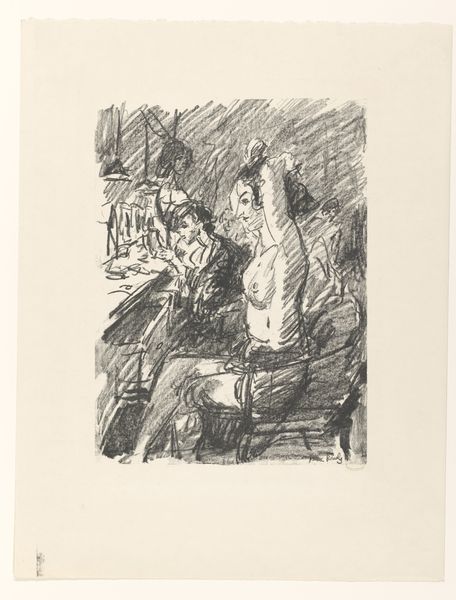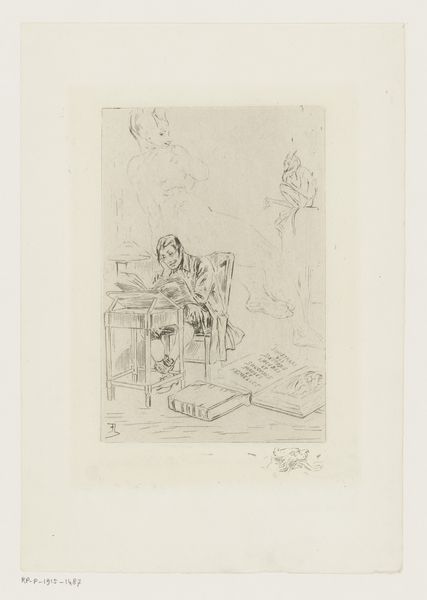
drawing, print, ink
#
portrait
#
drawing
# print
#
figuration
#
ink
#
post-impressionism
Dimensions: image: 22 1/2 x 17 13/16 in. (57.1 x 45.3 cm)
Copyright: National Gallery of Art: CC0 1.0
Editor: This is "Le Fou" by Henri de Toulouse-Lautrec, made around 1895, using ink as a drawing print. It gives off a rather stark, isolated feeling, almost as if peering into a fleeting moment. What do you see in this work, from a historical context? Curator: This image provides a window into the socio-political context of late 19th-century France, a period grappling with anxieties surrounding mental health and social exclusion. Consider the title, "Le Fou," which translates to "The Madman." Lautrec's choice immediately positions the subject within a stigmatized social category. The figure's posture and gaze suggest a sense of alienation, perhaps reflecting the institutionalized othering of those deemed mentally unstable at the time. The setting is possibly a mental institution or asylum where such individuals were confined, mirroring the era's limited understanding and often inhumane treatment of mental illness. Editor: So, it's not just a portrait, but almost a social commentary? How did exhibiting such works play out back then? Curator: Precisely. By exhibiting this work, Lautrec implicitly challenges the prevailing societal views on mental illness. Remember that art galleries and exhibitions serve as platforms to address societal problems and encourage discourse. While the drawing may have reinforced existing stereotypes for some, for others, it would have created space for conversation about mental health. The print's circulation also influenced how such subjects were visualized and understood publicly, either perpetuating or challenging preconceptions. Editor: That is very interesting. I wouldn’t have thought of it in this manner initially, but your insights truly contextualize the artwork, demonstrating that “Le Fou” transcends simple portraiture, serving as an implicit, pointed commentary on societal treatment of mental illness at that time. Curator: Yes, and remembering these contexts makes our experience richer. These institutions played a powerful role in shaping the way these figures were understood and treated. We need to understand the social environment for context.
Comments
No comments
Be the first to comment and join the conversation on the ultimate creative platform.
